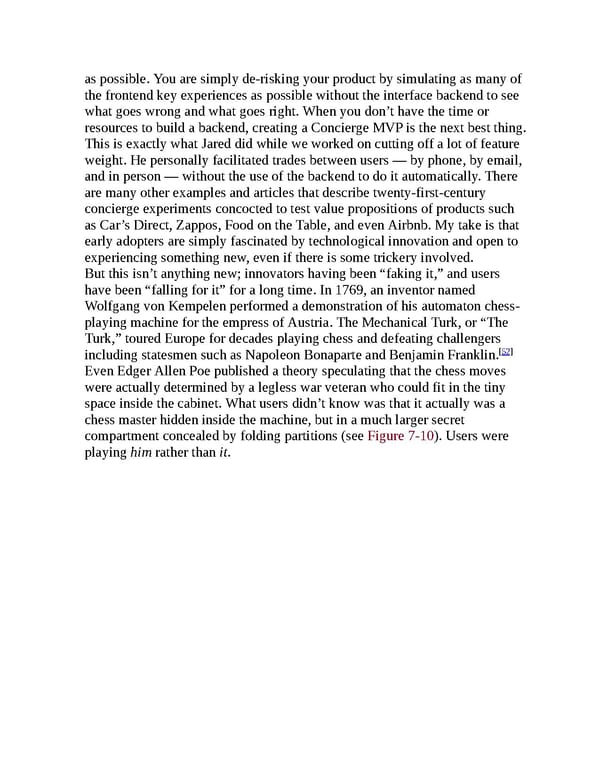as possible. You are simply de-risking your product by simulating as many of the frontend key experiences as possible without the interface backend to see what goes wrong and what goes right. When you don’t have the time or resources to build a backend, creating a Concierge MVP is the next best thing. This is exactly what Jared did while we worked on cutting off a lot of feature weight. He personally facilitated trades between users — by phone, by email, and in person — without the use of the backend to do it automatically. There are many other examples and articles that describe twenty-first-century concierge experiments concocted to test value propositions of products such as Car’s Direct, Zappos, Food on the Table, and even Airbnb. My take is that early adopters are simply fascinated by technological innovation and open to experiencing something new, even if there is some trickery involved. But this isn’t anything new; innovators having been “faking it,” and users have been “falling for it” for a long time. In 1769, an inventor named Wolfgang von Kempelen performed a demonstration of his automaton chess- playing machine for the empress of Austria. The Mechanical Turk, or “The Turk,” toured Europe for decades playing chess and defeating challengers [52] including statesmen such as Napoleon Bonaparte and Benjamin Franklin. Even Edger Allen Poe published a theory speculating that the chess moves were actually determined by a legless war veteran who could fit in the tiny space inside the cabinet. What users didn’t know was that it actually was a chess master hidden inside the machine, but in a much larger secret compartment concealed by folding partitions (see Figure 7-10). Users were playing him rather than it.
 UX Strategy: How to Devise Innovative Digital Products that People Want Page 184 Page 186
UX Strategy: How to Devise Innovative Digital Products that People Want Page 184 Page 186